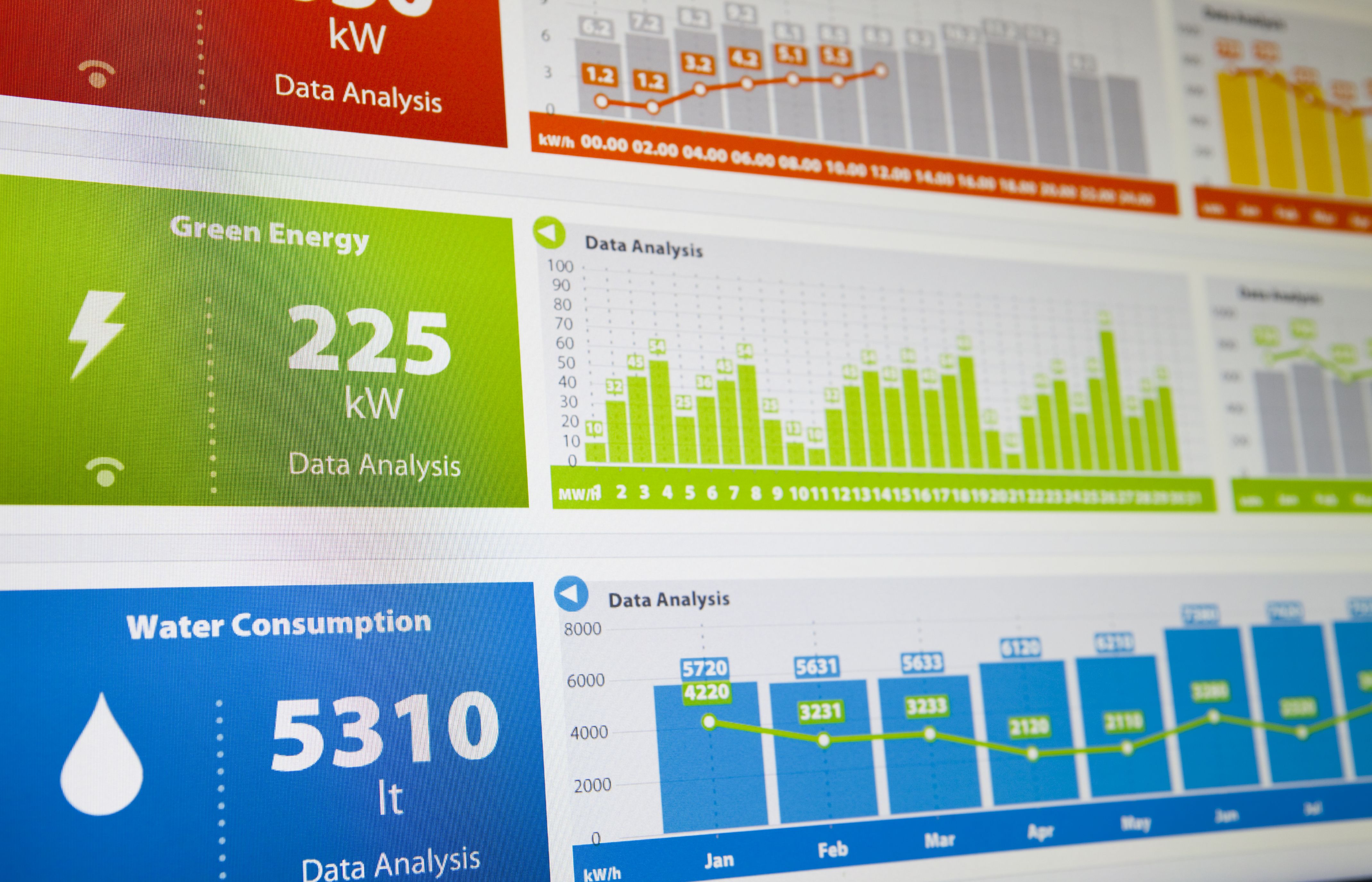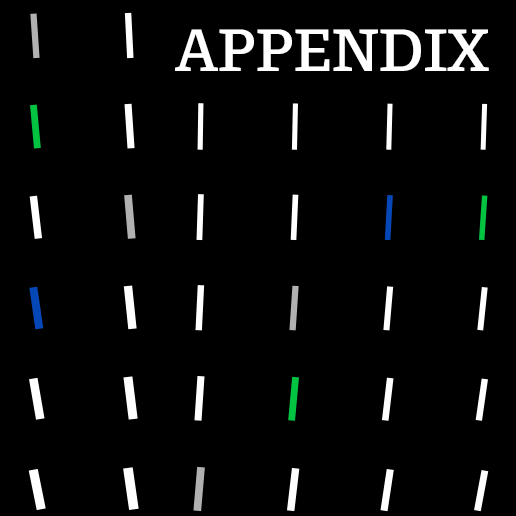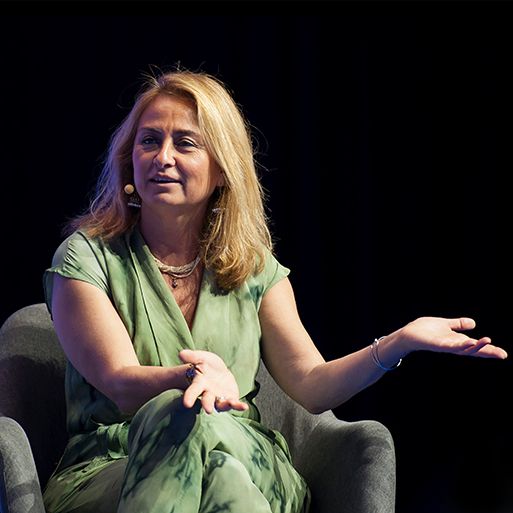

1. Achievements and improvement priorities

1.1 ITEA project impact
Since the start of ITEA, impact - both on business and on society - has been one of the main ambitions. In 2021, an impressive impact on society, the economy and everyday life was again created by the ITEA project partners with the support of the national Public Authorities. Since 2017, we have made it one of our priorities to gather remarkable project Impact stories, and a total of 32 stories have already been created.
Below, you can discover the highlights of 2 projects to inspire you. The other 2021 Impact stories can be found in section 4.1 ITEA Impact stories of this annual report and online via https://itea4.org/impact-stream.html. You can also create your own personal ITEA Impact stream online by choosing the challenges, countries and topics of your interest.
Reflexion Impact story



Thanks to the emergence of cheap sensors and affordable large-scale data storage, terabytes of data are acquired daily from complex systems. The trick is to filter the data in such a way that only relevant, valuable information remains that can be used to valorise operational data and propagate newfound knowledge back into the development cycle, services and maintenance. The Reflexion project has achieved exceptional results in this area.
Impact highlights
- Thanks to the achievements resulting from the Reflexion project, Axini aims to realise an additional €2.5 m of revenue between 2020-2025 and a company growth of 20%.
- Bridging the existing tabular data with log, text and image data allowed SynerScope to bring the first-time-right percentage up from 90% to 99.5%, effectively saving 40 FTE. Structured log analysis and analytics on interaction logs are now part of its user experience monitoring, reducing the time from the initial problem to pinpointed bottleneck by at least half. In addition, the structured log analysis has opened up exploitation in the new verticals of energy and oil & gas, which represent a multimillion-euro market opportunity.
- During Reflexion, Canon Production Printing developed an incredible maturity for the full digital loop and a set of products and methodologies that can be useful for many other European players. Thanks to this new approach, Canon Production Printing has improved its mean time to repair (MTTR) for all new machines by 50%.
- Due to its participation in Reflexion, Yazzoom expects that the results of the Reflexion project will lead to an additional revenue of €2.5 m in the five years after the project’s completion.
- For Barco and TNO, new business models (e.g. the NEXXIS Care Plan) were introduced, the value of which was estimated at €20 m in the next 5 years after the end of the project in 2019.
- Besides the incredible industrial impact, 25 data science jobs were created among the project partners during the project. This workforce is continuing to work on the Reflexion agenda and address several smart industry challenges (such as the effective use of scarce human expert capital) by exploiting data to assist the realisation of better operational solutions and designed systems.
FUSE-IT Impact story





FUSE-IT addressed the need for sustainable, reliable, user-friendly, efficient, safe and secure Building Management Systems in the context of smart critical sites like hospitals. From a site management perspective, it solves the dilemma of efficiency and security in intelligent buildings. At the user level, a smart unified building management interface enables the daily monitoring and control of a building, while a full security management interface enables the supervision of both physical and logical security throughout the premises. At the end-user level, this can save both energy and lives.
Impact highlights
- A new (and misunderstood) topic when the project idea was first introduced back in 2013 was the protection of smart infrastructures against combined cyber and physical threats. This now appears in the top 3 areas of investment by public and private actors. From this perspective, FUSE-IT has been a pioneer project, enabling the consortium members to take a strategic lead.
- Since 2017, about €48 m in revenue has been reported in direct relation to the project results. The most striking commercial successes include:
- 17 system integration operation contracts in the field of smart building management and optimisation.
- 25 contracts won in the field of critical infrastructure protection against cyber and physical threats.
- The successful market introduction of a start-up company delivering SaaS platform services for enhanced control and management of sensitive building information.
- The project has led to the acceptance of 4 patents.
- Airbus CyberSecurity has been awarded a €740 k contract to fulfil risk assessment surveys on 14 sites of Airbus Defence and Space in Spain, France, the UK and Germany and a contract worth €500 k to secure a data centre organisation against cyber and physical threats. In addition, Airbus CyberSecurity has been awarded a multi-million euro contract with an important gas transportation company, an integration contract for the protection of a large data centre's infrastructure and several contracts with large energy production utilities and distribution system operators in the UK, France and Germany.
- The FUSE-IT project allowed Niko to grow faster and become more attractive to other companies. The team is still growing and has had double-digit growth during the last 5 years.
1.2. ITEA improvement priorities and results 2021
As part of our annual quality process, several important improvement priorities were defined in collaboration with the ITEA Board in order to keep the ITEA programme strong and aligned with its goals and the innovation landscape. Below, you can find the 2021 improvement priorities along with their current statuses.
1.2.1. Finalising preparations to launch ITEA 4 as part of the ECP
For the last two years, there have been intensive preparations for ITEA 4 with the continuous support of the ITEA Community and the ITEA Public Authorities. 2021 was the transition year from ITEA 3 to ITEA 4. New KPIs were defined for ITEA 4 with additional economic criteria to enable growth through innovation via collaboration and a new challenge, Smart energy, has been added. Based on the State-of-the-Art documents of ITEA 3 projects, new potential topics have been gathered in the Strategic Vision and Technology Roadmap. The Impact Plan for ITEA 4 the future, the Strategic Vision and the Technology Roadmap for ITEA 4 were finalised and approved by the Eureka High Level Group (HLG) in June 2021.
Furthermore, a number of documents have been produced in cooperation with the ITEA bodies to make the launch of ITEA 4 possible. These can be subdivided into legal documents and documents supporting ITEA's application to be one of the Clusters in the new Eureka Clusters Programme (ECP). The first set of documents consisted of the ITEA 4 Frame Agreement, the Articles of Association for ITEA 4 and the Project Consortium Agreement, among others. The application for the Eureka Clusters Programme was supported by the Impact Plan for ITEA 4 the future, the Strategic Vision and Technology Roadmap for ITEA 4 and the Financial Plan and the Call Schedule for ITEA 4.
1.2.2. Participation in ECP groups (CC, CC Support Group) that will shape the future of the Clusters (including cooperation and a relationship with CCF)
To facilitate and support the governance of the ECP and all of its activities, several bodies have been created in which the Eureka Clusters, their Community Bodies and the Public Authorities work together to shape and operate the ECP. The involvement and contribution of the Clusters and industrial representatives has mainly been realised via the Clusters Committee (CC) and CC Support Group (CC SG). The Presidium participates in these bodies together with a selection of Board and BSG members.
1.2.3. Continuation of ITEA bottom-up Calls in the new ECP
One of the spearheads that ITEA has advocated for in the bodies mentioned above is the continuation of the bottom-up ITEA Calls in the ECP. Furthermore, this was also a central topic in meetings that were held with individual PAs and within the ITEA Authorities Committee Workgroup (ITAC-WG). The bottom-up ITEA Calls are at the heart of the ITEA Community and should remain so in the future. The concept of Joint Eureka Clusters Calls is an excellent way to broaden the Clusters’ activities and stimulate cooperation and crossover innovation between the different Communities. Still, the individual Cluster Calls are the catalysers of the different Clusters and the binder that keeps the Communities strong and alive.
1.2.4. Preparing Joint Eureka Clusters Call rules and agreements, initiating the next Joint Call(s)
ECP has added a new concept of Joint Eureka Clusters Calls, which enable collaboration among Eureka Clusters’ Communities. This new concept of Joint Eureka Clusters Calls enables harmonisation between the Call management rules of the Eureka Clusters, such as on project evaluation and project reviews. The Joint Eureka Clusters Calls are promoted to Eureka Clusters’ Communities simultaneously with the same content. The main purpose of these Joint Calls is to increase collaboration among the Communities of Eureka Clusters and improve the impact of Eureka Clusters. In a Joint Eureka Clusters Call, a project may select a primary and secondary Cluster to access the knowledge base of multiple Clusters. This new type of Call therefore needs a set of new rules to manage the Call and to share the new workload and financials. Eureka Clusters defined these rules with the support of Public Authorities and they were approved by the Eureka HLG. In addition, sustainability has been defined as the topic for the first ECP Joint Call, which was launched on 1 February 2022.
1.2.5. Continuing customer orientation through ITEA events
Since 2015, ITEA has had a strong focus on customer orientation to improve the projects, their outcomes and their potential to create impact. In 2021, we continued this customer orientation through our events by organising a Cyber Security Day, a Smart City Day and a Smart Energy customer workshop and by participating in the Cyber Security & Cloud Expo 2021 together with 6 ITEA projects. Due to the strong focus that ITEA already had within several activities on Smart cities, the decision was made to not participate in the Smart City Expo World Congress 2021. Due to the pandemic, it was also unfortunately not possible to investigate potential additional events (e.g. on Smart industry and Smart engineering). However, we are very proud that we were able to establish the Cyber Security Advisory Board (CySAB) and expand the Smart City Advisory Board (SCAB) in 2021. More information on these advisory boards can be found in section 4.2 ITEA customer orientation. These events and activities have brought ITEA even closer to the market, focusing on real customer and societal challenges.
1.2.6. Continued efforts (including KPIs) on:
-
Achieving an ITEA Call 7 size of €110 m (excluding 2021 Joint Eureka Cluster Calls)
In recent years, it has become more challenging for ITEA to maintain Call sizes that match the targeted level of the ITEA KPIs. For Call 6 in particular, there has been a decline in the funding level in some countries. Despite this tendency, a positive turnaround is recognisable in Call 7, which developed towards a size of almost €90 m in 2021. -
Minimising the time between the idea and the project start in the ECP
To improve the processes of the Clusters, they have been reorganised into the new Eureka Clusters Programme, which should lead to better and clearer funding decisions more quickly. This goes for the Joint Calls but should also be applicable to the ITEA bottom-up Calls. The importance of shortening the time between the project idea and the project start has been confirmed by the participating ITAC members. For ITEA Call 2021 and the Joint Eureka Clusters Call 2021, we are targeting a time-to-project of 12 months. -
Expanding the ITEA programme in new countries that participate in the ECP
Despite the disadvantage of hardly having any physical meetings due to the pandemic, a number of contacts have been made with countries that support ITEA projects or AI Call projects in which ITEA has a leading role. An example of this is Singapore, which has been involved in more ITEA activities (such as the PO Days) and now has a partner in one of the POs which is invited to submit an FPP in ITEA Call 2021. -
Press approach in combination with partners
This year, ITEA has again teamed up with the project partners of award-winning ITEA projects and has created four press releases that can be found at https://itea4.org/press_releases.html. Based on the advice of Bosch, external press was invited to the online ITEA award ceremony and a dedicated press Q&A was organised afterwards. Although no articles on ITEA or the award-winning projects have appeared in the national press yet, the coverage has been strongly improved and the awards for EMPHYSIS and PARTNER were particularly well-covered by external websites thanks to the communication efforts of several project partners. -
Impact stream
Four new ITEA Impact stories have been added to the online ITEA Impact stream, showing strong results achieved in different domains, pushing the Digital Transition and improving customer satisfaction. Reflexion focused on the continuous, real-time conversion of operational user data from industry into information, while the Flex4Apps partners built reference architectures that provide template solutions for dealing with monitoring and analytics and developed methodological support to help teams leverage these. FUSE-IT addressed the need for sustainable, reliable, user-friendly, efficient, safe and secure Building Management Systems in the context of smart critical sites and ASSUME dealt with the demands of multi-core technologies in highly automated systems.
1.2.7. High-level KPIs
The ITEA Office has a Quality Management System (QMS) in place; since April 2014, this QMS has been ISO9001:2008-certified and, since April 2017, the QMS of the ITEA Office has met the requirements of the new ISO 9001:2015 standard. As part of this QMS, several high-level KPIs have been defined for ITEA. In 2021, ITEA achieved the following scores for these high-level KPIs:
| Strategic leadership | Target 2021 | Realised 2021 |
|---|---|---|
| Forecast funded Call size ITEA 3 Call 7 | > €110 m | €65-90 m |
| Time from idea to project start of ITEA 3 Call 7 | <12 months | 19 months (estimated) |
| Hit rate ITEA 3 Call 6 | >70% | 45% |
| Average quality of events (Smart City Day, Cyber Security Day, customer workshop, Online PO Days, Cyber Security & Cloud Expo) | >3.5 | 3.5 |
In this annual report, the sections 3.1 ITEA Programme size, 3.2 ITEA Calls progress and 4.3 ITEA Events give an explanation and more details on these KPIs and their values in 2021.
1.3. ITEA improvement priorities 2022
To continuously enhance the ITEA programme, improvement priorities are defined on a yearly basis. For the upcoming year, the following improvement priorities have been defined.
1.3.1. Participation in ECP groups (CC, CC Support Group) that will shape the future of the Clusters
We will continue our involvement and contribution to the different bodies that are determining the direction and operation of the different activities within the ECP, such as the Joint Calls, as well as the emergence of new Clusters.
1.3.2. Selective participation in Joint Calls: improving the balance between cost/effort and the outcome of Joint Calls
The operation and support of the Joint Calls offer added value for the ITEA Community in terms of windows of opportunity to explore new innovation themes and partnerships. However, they also clearly impact the ITEA Office and the industrial contribution regarding the evaluation, monitoring and support of the increasing number of (submitted) projects. To keep all efforts and available resources in balance, it is necessary to consciously weigh up our decision to participate in Joint Eureka Clusters Calls
1.3.3. Evaluating rules, regulations and agreements regarding the ECP, Joint Call(s) and Cluster Cooperation and preparing ICT for Joint Calls
In 2020 and 2021, the first Joint Eureka Clusters Call experiments were initiated via the AI Calls 2020 and 2021. Based on these Joint Calls, the Clusters have made initial agreements concerning their cooperation. The most important aspects of these agreements are the sharing of costs for the Cluster(s) that are managing the Joint Call, the sharing of the contribution revenues between the primary and secondary Clusters and the division of tasks regarding the different activities that need to be done in a Joint Call, such as matchmaking, brokerage events, branding, communication and more. Furthermore, agreements have been made on ICT cooperation between the Clusters. A first important step is the development of a so-called PA Portal, which gives PAs access to the data of all Joint and single Cluster Calls that take place and/or have operated in the recent past.
1.3.4. Successful ITEA bottom-up Calls in the new ECP
ITEA bottom-up Calls have had a proven track record of impact and success for over 20 years. With more than 30 stories, the ITEA Impact stream (https://itea4.org/impact-stream.html) shows that ITEA projects are impactful – both on the economy and society. To enable this stream of impact, ITEA bottom-up Calls are of huge importance. In the Multi-Annual Plan (MAP) of the ECP, ITEA 4 has announced that bottom-up Calls will be held each year in September as before and that Public Authorities will support these Calls with either dedicated or open budgets. Bottom-up ITEA Calls offer the ITEA Community the freedom to innovate on new concepts that are not in commodity yet. And this free thinking fertilises new ways of solving emerging problems and the needs of end-users and the ITEA Community, such as new worldwide standards or new concepts of digitalisation. Maintaining and preserving a focus on ITEA bottom-up Calls is therefore a demand of the ITEA Community and is supported by Public Authorities.
This support from Public Authorities (in the form of good funding opportunities) is one of the pillars for the success of a Call. We will continue to work with our industry partners and the Public Authorities to improve the funding possibilities, both in the usual ITEA countries and in new countries. For 2022, we have set the target for the ITEA Call 2021 at €110 m.
1.3.5. Continued customer orientation by exploring other possible topical events
In 2022, ITEA will continue on its course of strengthening its customer orientation through events by organising a Smart health customer workshop, a Smart engineering technical workshop and Smart City and Cyber Security Advisory Board meetings and by exploring possibilities to participate in external customer-oriented events.
1.3.6. Continued efforts on:
-
Minimising the time between the idea and the project start in the ECP
To improve the processes of the Clusters, they have been reorganised into the new Eureka Clusters Programme, which should lead to better and clearer funding decisions more quickly. This applies to the Joint Calls but should also be applicable to the ITEA bottom-up Calls. The importance of shortening the time between the project idea and the project start has been confirmed by the participating ITAC members. For both the bottom-up ITEA Calls and the Joint Eureka Clusters Calls, we are striving for improvements and targeting a time-to-project of 12 months. -
Expanding the ITEA programme in new countries that participate in the ECP
Eureka has a big network of participating countries and is continuously investing in participation by new countries. The Joint Calls, where PAs also have a voice in choosing the subject, are a strong tool for attracting new countries and familiarising them with the Clusters. These new countries can then more easily be approached and involved in ITEA’s bottom-up Call. For example, Singapore participated in the 2020 Joint AI Call preparations, then joined the 2020 ITEA PO Days and is now involved in a project which has been invited to submit an FPP in ITEA Call 2021. -
Expanding the ITEA Board
We aim to expand the ITEA Board with two more companies in 2022. -
Extending the Impact stream
As in past years, ITEA will continue its efforts to highlight and promote the strong outcomes of ITEA projects. For 2022, a goal has been set to publish at least four new Impact stories. -
Press approach in cooperation with partners
With the new lessons learned over the past years and the support of project partners, ITEA will strive to improve its press approach in 2022 in order to achieve the ambition of two articles in national press.

Other chapters
Use the arrows to view more chapters

Appendix A. Call statistics per year and per country
Participation in person-years per Call and per country per year






